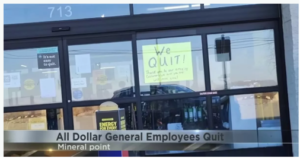It is easy to find the definition of Employee Value Proposition (EVP), but it is much more difficult to create one that actually inspires employees. For this reason, strong EVPs are significant differentiators in every market my team has analyzed. Organizations with a strong EVP pay employees less than others and still retain employees 300% longer (CEB, the Corporate Executive Board Company, Preparing your Employment Value Proposition for 2016). This adds up to millions in turnover cost savings alone, not to mention the benefits to employee engagement and productivity. There is no doubt that a compelling EVP is worth blood, sweat, tears, time, and money.
But plenty of companies make the investment without the results. Many EVPs prove ineffective because they either: 1) Mismatch with real employees; 2) Are too generic; or 3) Make big promises but underdeliver.
The case study I would like to bring to your attention, Mayo Clinic, has sustained a Top 100 Best Place to Work ranking for its 63,000 employees over 14 consecutive years (Fortune, 2017). The multibillion organization avoids these three pitfalls by doing three things: 1) Asking employees what they value; 2) Reinforcing the EVP with initiatives; 3) Implementing EVP through committees, leaders and employees. They do this continuously, comprehensively, and their program is rampantly successful.
The question we all need to ask is how? By taking a close look at the most inspirational EVP on this good, green Earth and analyzing the wazoo out of it, I intend to retrace the organizational footsteps that produce and sustain a compelling value to employees.
Why Mayo Clinic Has Sustained as a Top 100 Best Place to Work for 14 Consecutive Years
Yesterday, I performed an exercise. I went out on the seven seas of the Internet to define this elusive EVP term. But my trolling efforts, however determined they were, proved an utter failure.
There are innumerable definitions out there to choose, but each one felt like a caged tiger, being fed lamb chops for dinner. Whether it was IBM or a Forbes contributor or CEB, each one skewed the definition in an important and potentially lethal way. Recruiters tend to focus on the employment brand; management consultants tend to focus on the strategy; no matter who you listen to, they are all right and all equally wrong.
So, instead of starting with a definition, it is better to start with a question: What motivates employees to work here?
Most consultancies approach this question by dividing value into five areas:
- Work: Heads-down work, requirement for focus, challenge
- Rewards: Compensation and benefits, stability
- People: The work environment, teams, managers, culture, etc.
- Organization: What the organization stands for, its reputation
- Opportunity: Career development, challenge, self-improvement, organizational growth
All these areas work together to provide important sources of value to employees. But employees can be very different in what they appreciate or dislike, and their opinions can easily change from one quarter to the next. EVP is therefore a fluid concept, and it needs to be treated that way.
Managing Fluidity: Create unalienable points of connection
“We used employee input (critical drivers) to develop our employee value proposition. As an employer, your value proposition has to match reality and align with the actual experience of your employees.”
Jamie Schmitgen, Chair of People Services, Mayo Clinic
Fluidity does not mean meaningless, however. In fact, this amorphous, unpredictable aspect makes it all the more important to hammer down some fundamental propositions, so that all of these five areas start to gain real purpose and meaning.
It is important to understand what employees care about and to tie this directly with what matters to the customer. Nowhere is this tie stronger than at Mayo Clinic, one of the most successful and innovative healthcare providers in the world.
Mayo Clinic performed over 150 employee interviews to develop the employee value proposition, which is artfully worded: “A life-changing career.” This can be read from either the perspective of saving the lives of patients, or as growing the prestigious careers of its staff members. Both meanings are relevant and work together to contribute to Mayo Clinic’s continued success by inspiring both the ambition of its talented workforce and its employees’ heartfelt desire to help the lives of their patients.
Maintain Focus on EVP
More than a mere value proposition, more than a recruiter’s verbiage, “A life-changing career” serves as the basis for continual affirmation of staff. Mayo Clinic develops and promotes Patient Stories, an initiative to document the success stories of Mayo patients whose lives have been changed.
One story focused on an eight year-old girl who had received a heart transplant at Mayo when she was just eight years old. The team of Mayo staff who took care of her was invited, years later, to her wedding. They not only attended, they danced with her after the traditional father-daughter dance. Stories like this help to explain how the employee value proposition, “a life-changing career” leads directly to the mission statement: “The needs of the patient come first.” By telling stories, Mayo Clinic reminds its entire workforce why they work at their best, every day.
Uphold the EVP with Real Infrastructure
Mayo Clinic assigns priority EVP responsibilities to its People and Culture Committee (PCC), a conglomerate of physicians, human resources, and administrative leaders. The Committee reports directly to the board of governors, identifying challenges and opportunities and with a goal of improving the EVP overall.
Share Accountability for People and Culture
No matter how much leadership wants to strengthen the cultural aspect of its EVP, they are relatively powerless to effect real change. What we see at Mayo, as well as other Employee Engagement leaders, is an acknowledgement of shared accountability with employees with regards to work environment. Mayo has created regular processes through which leaders and managers listen to their work units, share what they have heard with the group, and take real action to improve. Results are measured and evaluated. When results are less than inspiring, further action is taken to address the challenge. We have seen shared accountability for work environment, and specifically retention, put to great effect in Insurance, as well.
Takeaway: Differentiated Employee Value Propositions (EVP) Start and End with Employees
From Mayo, we can see that a stellar EVP can be organized and understood through a compelling sentence, or even just a phrase that crystallizes the primary reason for employees to work. “A life-changing career” beautifully brings together two practices, the first of physicians caring for patients, the second of the organization caring for its employees.
And yet, no matter how beautiful and inspiring the wordplay, no do-as-I-say soundbite would mean anything without a do-as-I-do follow-through. Mayo’s thorough, process-centric approach to its EVP ensures that its core values are carried to its employees, so that its employees will also carry those same values through to its customers, or in the case of Mayo Clinic, to patients.
Sources
Corporate Executive Board, The. “Preparing Your Employment Value Proposition for 2016.” Gartner: Stamford, CT. Accessed on July 9, 2018.
Fortune. “The 100 Best Places to Work for 2017.” Time, Inc.: New York, NY, 2017. Accessed on July 10, 2018.






